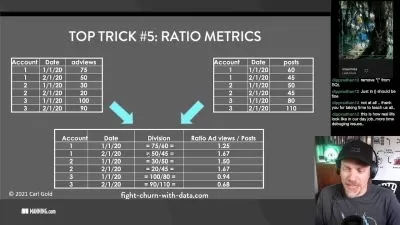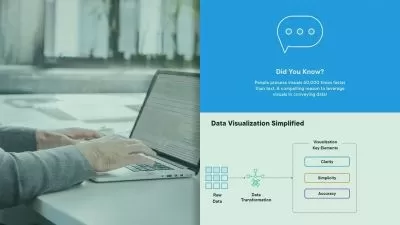Social Network Analysis
Taimoor khan
2:47:38
Description
Graph theory and complex network analysis in static and dynamic setup
What You'll Learn?
- Apply the basics of social network analysis at node level, sub-graph level and graph level
- Analyze social context in graphs
- Conduct SNA on data collected in a learning setting
- Design a research study using relational data
Who is this for?
What You Need to Know?
More details
DescriptionEverything is connected: people, information, events and places, all the more so with the advent of online social media. A practical way of making sense of the tangle of connections is to analyze them as networks. In this course, we start with graph theory and extend our discussion to complex networks. Network analysis techniques are discussed in relevance to real world problems to arrive at interesting results. There are practical demonstrations of the theoretical concepts in Python using packages like NetworkX, Matplotlib for plotting and visualizing while Numpy and Pandas for reading and presenting data. Gephi is also discussed for performing different analytics on the data through its interface.
You will learn how to prepare data and map these relationships to help you understand how people communicate and exchange information.
It elaborates on link analysis using different techniques to determine the importance of a node e.g., centrality, prestige and particularly page rank algorithm. AÂ particular emphasis is laid in understanding graph traversals, i.e., using the shortest path algorithms and solving optimization problems using graph coloring.
Since we are considering social networks that is the network among human actors, therefore, it also enhances the importance of language processing which is often using by humans to socialize. On social media, we see people posting their thoughts, and sharing comments on others posts. Therefore, just knowing the presence or absence of a post or comment is not important, but we also need to use language processing techniques to understand the semantics of it.
The course will review foundational concepts and applications of social network analysis in learning analytics. You will also learn how to manipulate, analyze, and visualize network data.
Who this course is for:
- computer and social scientists
Everything is connected: people, information, events and places, all the more so with the advent of online social media. A practical way of making sense of the tangle of connections is to analyze them as networks. In this course, we start with graph theory and extend our discussion to complex networks. Network analysis techniques are discussed in relevance to real world problems to arrive at interesting results. There are practical demonstrations of the theoretical concepts in Python using packages like NetworkX, Matplotlib for plotting and visualizing while Numpy and Pandas for reading and presenting data. Gephi is also discussed for performing different analytics on the data through its interface.
You will learn how to prepare data and map these relationships to help you understand how people communicate and exchange information.
It elaborates on link analysis using different techniques to determine the importance of a node e.g., centrality, prestige and particularly page rank algorithm. AÂ particular emphasis is laid in understanding graph traversals, i.e., using the shortest path algorithms and solving optimization problems using graph coloring.
Since we are considering social networks that is the network among human actors, therefore, it also enhances the importance of language processing which is often using by humans to socialize. On social media, we see people posting their thoughts, and sharing comments on others posts. Therefore, just knowing the presence or absence of a post or comment is not important, but we also need to use language processing techniques to understand the semantics of it.
The course will review foundational concepts and applications of social network analysis in learning analytics. You will also learn how to manipulate, analyze, and visualize network data.
Who this course is for:
- computer and social scientists
User Reviews
Rating
Taimoor khan
Instructor's Courses
Udemy
View courses Udemy- language english
- Training sessions 42
- duration 2:47:38
- Release Date 2024/05/07










